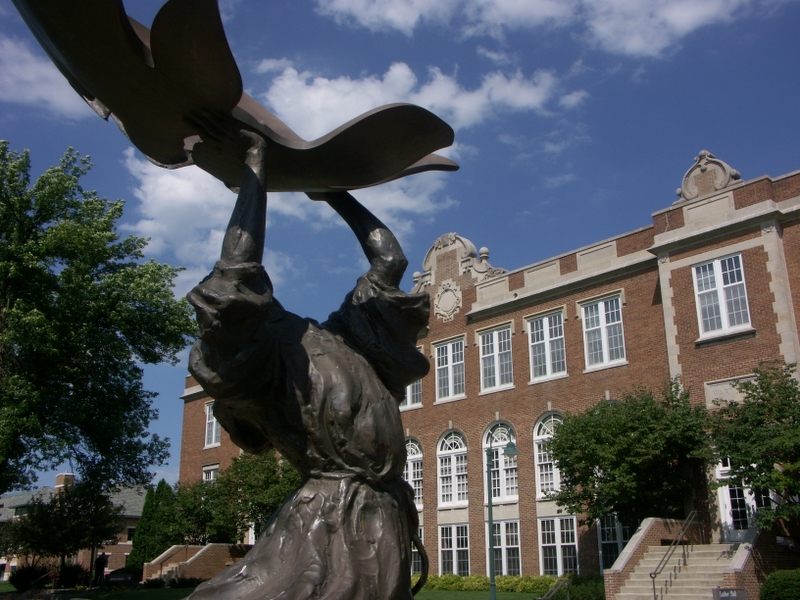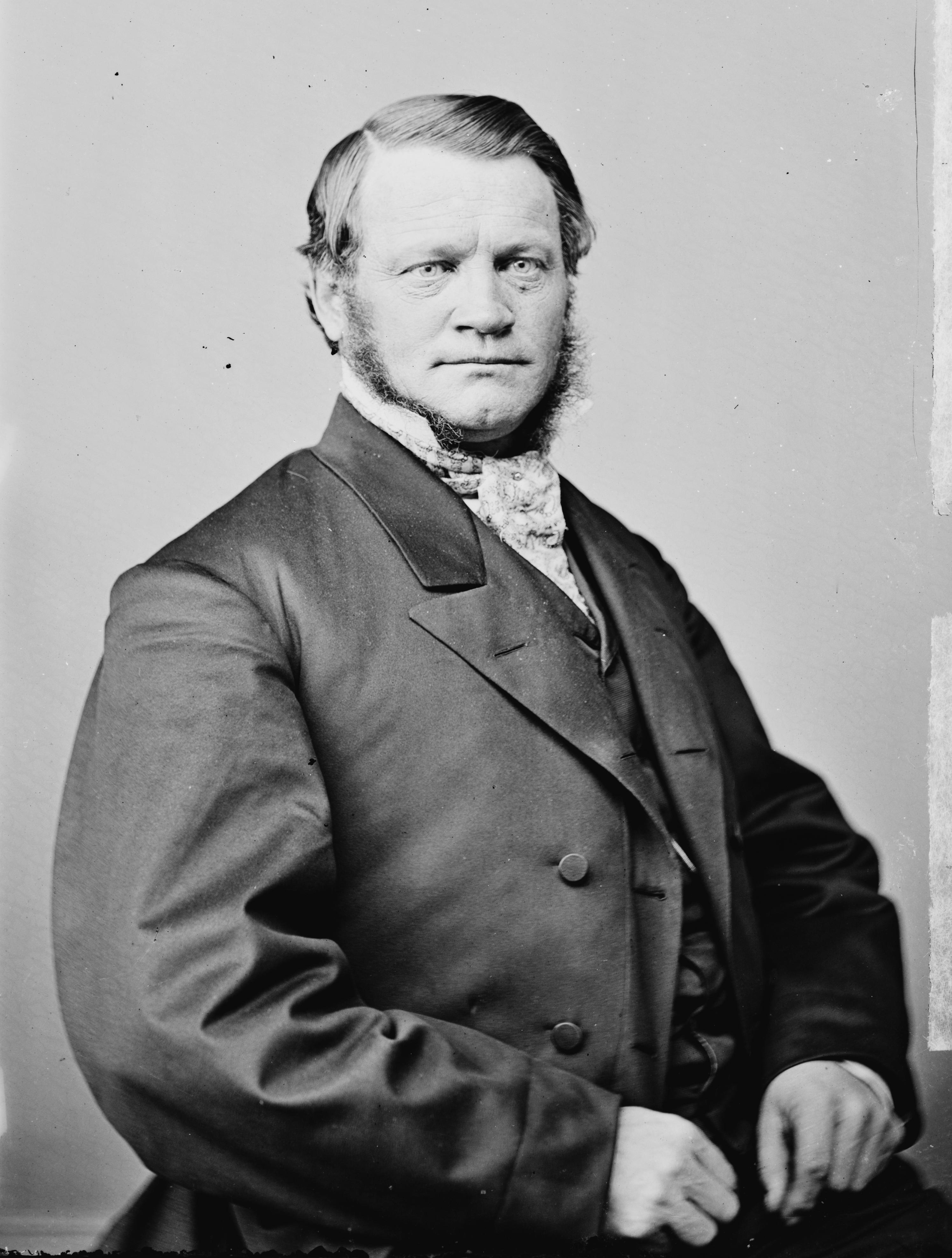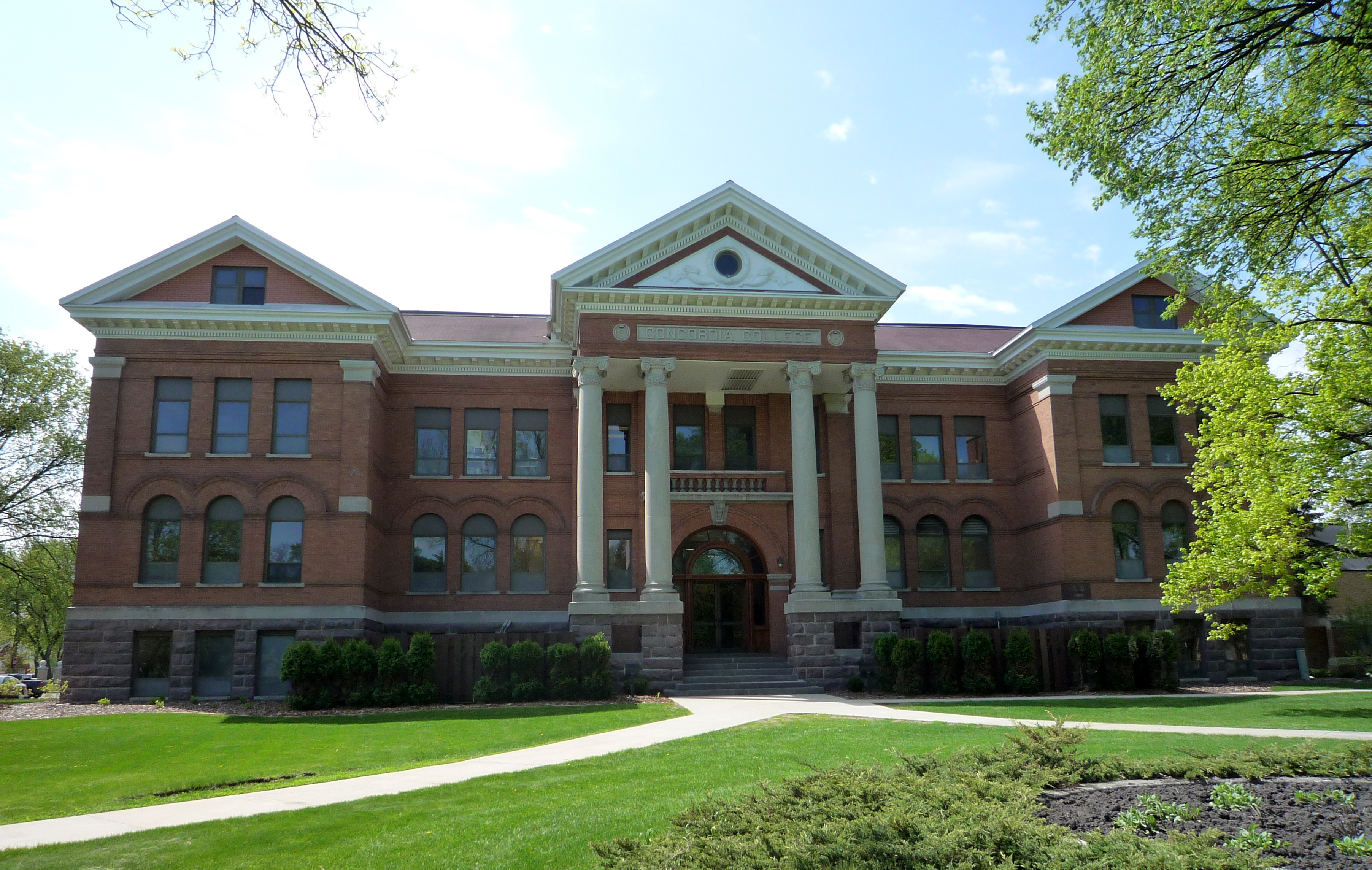|
Paul Granlund
Paul T. Granlund (October 6, 1925, Minneapolis, Minnesota – September 15, 2003, Mankato, Minnesota) was an American sculptor. His creative career spanned more than 50 years and more than 650 different works. Most of his work is figurative and made from bronze. His patrons included colleges, hospitals, Lutheran churches, and other institutions. Background Granlund was born on October 6, 1925, in Minneapolis, the son of the Rev. Clarence and Naomi Granlund. He attended Central High School in Minneapolis. He married Edna Spaeth in 1950. Granlund received his Bachelor of Arts from Gustavus Adolphus College in St. Peter, Minnesota in 1952 and his Master of Fine Arts from Cranbrook Academy of Art in Michigan in 1954. Awarded a Fulbright scholarship to study sculpture in Italy the same year, he later returned on Guggenheim Foundation fellowships in 1957–1959. During the 1960s and '70s, he was a faculty member at the Minneapolis College of Art and Design. He also chaired the ... [...More Info...] [...Related Items...] OR: [Wikipedia] [Google] [Baidu] |
Nicholas Legeros
Nicholas Legeros (born February 27, 1955 in Edina, Minnesota) is an American (Minnesotan) bronze sculptor. Working from his studio building Blue Ribbon Bronze in Northeast Minneapolis, Nick has created over 500 sculptures in his career. His most prominent works can be found in the Twin Cities and Hudson, Wisconsin. In addition to his work as a sculptor, Nick is an active artist advocate and has been president of the Society of Minnesota Sculptors (1988-1995), president of the Northeast Minneapolis Artists Association (2007-2009), and served on many boards including the Northeast Community Development Corporation. Education and background Legeros grew up in Edina, Minnesota and first encountered an artistic dilemma in the 4th grade. His class was asked to create small sculptures, and Nick spent much time crafting a small head, which won the admiration of much of his classmates. Legeros, in what little time remained, fashioned an elephant which he turned in for extra credit. The tea ... [...More Info...] [...Related Items...] OR: [Wikipedia] [Google] [Baidu] |
Eric Norelius
Eric Norelius (26 October 1833 – 15 March 1916) was a Swedish-American Lutheran minister, church leader, and author. Background Eric Norelius was born on 26 October 1833 in Norrbäck, Hassela parish, Sweden. He received his early education at Hudiksvall's general school. In 1850, at the age of 17, Norelius emigrated to the United States. In May 1851, he accompanied Lars Paul Esbjörn on a visit to William Morton Reynolds, president of the newly renamed Capital University at Columbus, Ohio, and stayed on to become a student there, with assistance from Esbjörn. After four years of studying, Norelius was ordained in 1855. Career Norelius moved to the newly formed congregations in Red Wing, and Vasa, Minnesota in 1856. In 1858, he was called to serve the Swedish Lutheran congregation in Attica, Indiana. In 1863, he was called back to the Vasa and Red Wing congregations in Goodhue County. Lutheran Social Service of Minnesota traces its history to 1865 when Noreli ... [...More Info...] [...Related Items...] OR: [Wikipedia] [Google] [Baidu] |
St Peter, Minnesota
St. Peter is a city in Nicollet County, Minnesota, United States. It is 10 miles north of the Mankato – North Mankato metropolitan area. The population was 12,066 at the 2020 census. St. Peter is the county seat of Nicollet County and home to Gustavus Adolphus College. U.S. Highway 169 and Minnesota State Highways 22 and 99 are three of the city's main routes. St. Peter's sister city is Petatlán, Guerrero, Mexico. Geography According to the United States Census Bureau, the city has an area of , of which is land and is water. Demographics 2010 census As of the census of 2010, there were 11,196 people, 3,491 households, and 2,150 families residing in the city. The population density was . There were 3,697 housing units at an average density of . The racial makeup of the city was 90.1% White, 3.3% African American, 0.6% Native American, 1.6% Asian, 2.3% from other races, and 2.0% from two or more races. Hispanic or Latino of any race were 6.4% of the population. The ... [...More Info...] [...Related Items...] OR: [Wikipedia] [Google] [Baidu] |
Grinnell, Iowa
Grinnell is a city in Poweshiek County, Iowa, United States. The population was 9,564 at the time of the 2020 census. It is best known for being the home of Grinnell College. History Grinnell was founded by settlers from New England who were descended from English Puritans of the 1600s. Grinnell was founded in 1854 by four men: Josiah B. Grinnell, a Congregationalist from Vermont; Homer Hamlin, a minister; Henry Hamilton, a surveyor; and Dr. Thomas Holyoke. The city was to be named "Stella," but J. B. Grinnell convinced the others to adopt his name, describing it as rare and concise. Grinnell was incorporated on April 28, 1865, and by 1880 Grinnell had a population of around 2000. Located at the junction of two railway lines (east–west line of the Rock Island Railroad and the north–south Minneapolis and St. Louis Railway), it is the largest community in Poweshiek County. Grinnell was a stop on the Underground Railroad from its founding. One of the most famous events o ... [...More Info...] [...Related Items...] OR: [Wikipedia] [Google] [Baidu] |
Grinnell College
Grinnell College is a private liberal arts college in Grinnell, Iowa, United States. It was founded in 1846 when a group of New England Congregationalists established the Trustees of Iowa College. Grinnell has the fifth highest endowment-to-student ratio of American liberal arts colleges, enabling need-blind admissions and substantial academic merit scholarships to boost socioeconomic diversity. Students receive funding for unpaid or underpaid summer internships and professional development (including international conferences and professional attire). Grinnell participates in a 3–2 engineering dual degree program with Columbia University, Washington University in St. Louis, Rensselaer Polytechnic Institute, and California Institute of Technology, a 2–1–1–1 engineering program with Dartmouth College and a Master of Public Health cooperative degree program with University of Iowa. Among Grinnell alumni are 15 Rhodes Scholars, 5 Marshall Scholars, 16 Truman Scholars, 1 ... [...More Info...] [...Related Items...] OR: [Wikipedia] [Google] [Baidu] |
Seward, Nebraska
Seward is a city and county seat of Seward County, Nebraska, United States. The population was 6,964 at the 2010 census. Seward is part of the Lincoln, Nebraska Metropolitan Statistical Area. It is known for its large Fourth of July (Independence Day) celebration. History Seward was platted in 1868. It was named from Seward County. The railroad was built through Seward in 1873. Geography Seward is located at (40.911216, -97.096972). According to the United States Census Bureau, the city has a total area of , of which is land and is water. Demographics 2010 census At the 2010 census there were 6,964 people, 2,521 households, and 1,653 families living in the city. The population density was . There were 2,796 housing units at an average density of . The racial makeup of the city was 96.8% White, 0.6% African American, 0.4% Native American, 0.6% Asian, 0.3% from other races, and 1.4% from two or more races. Hispanic or Latino people of any race were 1.9%. Of the 2,521 h ... [...More Info...] [...Related Items...] OR: [Wikipedia] [Google] [Baidu] |
Concordia University, Nebraska
Concordia University, Nebraska is a private Lutheran university in Seward, Nebraska. It was established in 1894 and is affiliated with the Lutheran Church–Missouri Synod as one of seven schools in the Concordia University System. The university is organized into three schools: the College of Arts and Sciences, the College of Education, and the College of Graduate Studies. History Founding and early years Throughout the late 1880s there were efforts to establish a Lutheran teachers college in Nebraska. Efforts by four Seward businessmen, including the gift of of land and $8,000, led the district to settle on Seward as the site for the college. The school, then named the Evangelische Lutherische Schulleherer Seminar (Evangelical Lutheran School Teachers Seminary), was officially dedicated on November 18, 1894. Two days later classes began with its 13 students boarded, fed, and taught in the same building (now Founders Hall) by J. George Weller and his wife. Students were origina ... [...More Info...] [...Related Items...] OR: [Wikipedia] [Google] [Baidu] |
Concordia University, St
Concordia may refer to: * Concordia (mythology), the Roman goddess who embodies agreement in marriage and society Businesses and organizations Educational institutions * Concordia University (other), for Concordia University, Concordia College and Concordia Seminary * Concordia Academy (other) * Concordia High School (other) * Concordia Lutheran High School (other) * Concordia International School Shanghai, in Pudong, China * Concordia Junior-Senior High School, Concordia, Kansas * Concordia Language Villages, a world-language and culture education program * Concordia Normal School (closed 1878) * Great Western Business and Normal College, or Concordia Normal School and Business College, or Concordia Business College, in Concordia, Kansas, U.S. (closed 1930s) Other businesses and organizations * Concordia Association of Manchukuo, a 1930s–1940s political party * Concordia Healthcare, now Advanz Pharma * Concordia Publishing House, LCMS ... [...More Info...] [...Related Items...] OR: [Wikipedia] [Google] [Baidu] |
Moorhead, Minnesota
Moorhead () is a city in and county seat of Clay County, Minnesota, United States, on the banks of the Red River of the North. Located in the Red River Valley, an extremely fertile and active agricultural region, Moorhead is also home to several corporations and manufacturing industries. Across the river from Fargo, North Dakota, Moorhead helps form the core of the Fargo–Moorhead ND-MN Metropolitan Area. The population was 44,505 according to the 2020 census. Platted in 1871, the city was named for William Galloway Moorhead, an official of the Northern Pacific Railway. History The city was platted in 1871 and named for William Galloway Moorhead, a Northern Pacific Railway official and brother-in-law of financier Jay Cooke. The former Moorhead Armory on 5th Street South was the site of the intended concert destination for musicians Buddy Holly, Ritchie Valens, and The Big Bopper before their fatal plane crash a few miles north of Clear Lake, Iowa around 1.00 am Tuesda ... [...More Info...] [...Related Items...] OR: [Wikipedia] [Google] [Baidu] |
Concordia College, Moorhead
Concordia College is a private college in Moorhead, Minnesota. Founded by Norwegian settlers in 1891, the school is associated with the Evangelical Lutheran Church in America and practices the liberal arts. Concordia is accredited by the Higher Learning Commission and has a total student enrollment of 2,531. It offers Bachelor of Arts, Bachelor of Music, Master of Education, and Master of Science in nutrition degrees. Since Concordia was founded, it has articulated a Christian and global curriculum. Students are required to take courses in health, communication, religion, and culture. The university maintains athletic teams in 22 sports and carries 19 music ensembles, including The Concordia Choir, The Concordia Orchestra, and The Concordia Band. History Concordia College was dedicated as a private academy on October 31, 1891, by a group of approximately one dozen Norwegian pastors and laymen who had recently settled in the Red River Valley. The school was founded on the pr ... [...More Info...] [...Related Items...] OR: [Wikipedia] [Google] [Baidu] |
College Of St
A college (Latin: ''collegium'') is an educational institution or a constituent part of one. A college may be a degree-awarding tertiary educational institution, a part of a collegiate or federal university, an institution offering vocational education, or a secondary school. In most of the world, a college may be a high school or secondary school, a college of further education, a training institution that awards trade qualifications, a higher-education provider that does not have university status (often without its own degree-awarding powers), or a constituent part of a university. In the United States, a college may offer undergraduate programs – either as an independent institution or as the undergraduate program of a university – or it may be a residential college of a university or a community college, referring to (primarily public) higher education institutions that aim to provide affordable and accessible education, usually limited to two-year associ ... [...More Info...] [...Related Items...] OR: [Wikipedia] [Google] [Baidu] |






.jpg)

